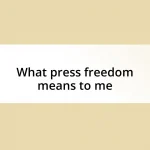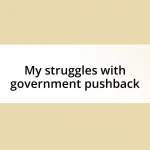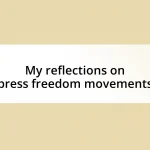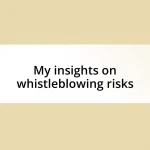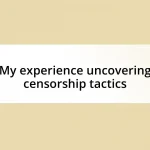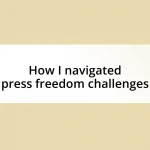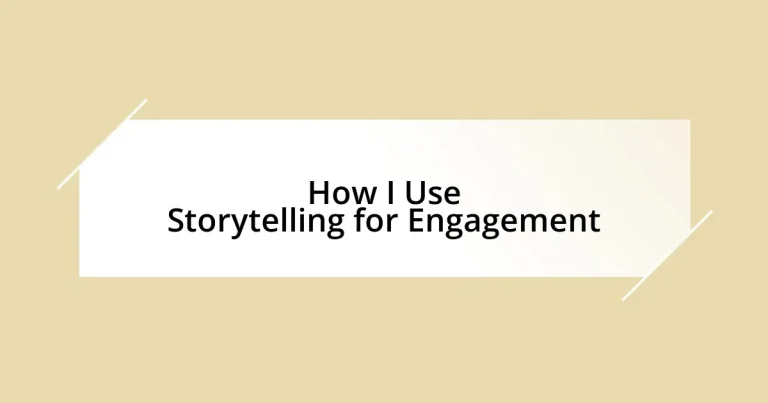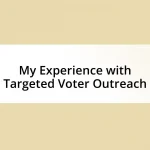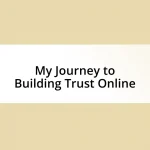Key takeaways:
- Storytelling fosters emotional connection and engagement by sharing vulnerabilities and relatable experiences.
- Effective storytelling requires understanding the audience’s needs, using active listening, and gathering feedback to tailor narratives.
- Incorporating visual elements enhances storytelling impact, making complex ideas more digestible and relatable.
- Measuring engagement success involves gathering audience feedback, observing body language, and monitoring social media interactions post-event.
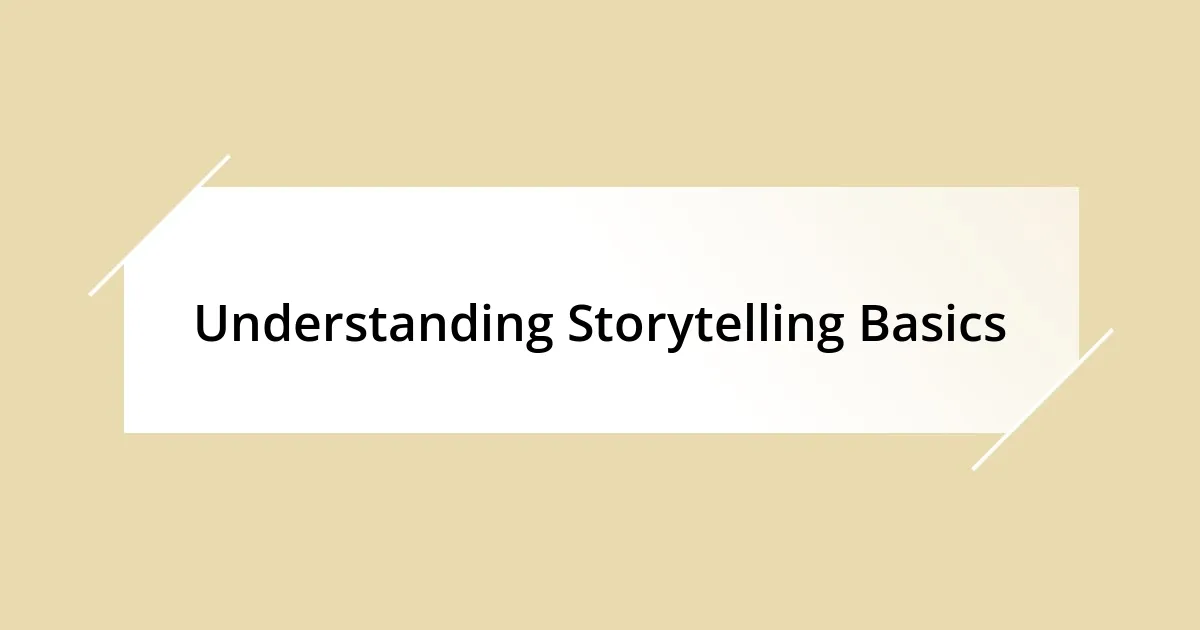
Understanding Storytelling Basics
At its core, storytelling is about connection. I remember a time when I shared a personal failure in a workshop, and the room transformed into a supportive space. Have you ever experienced how vulnerability in storytelling can create intimacy? It’s like opening a window to your authentic self and inviting others to peek in.
Understanding the structure of a story is crucial. Every story has a beginning, middle, and end, but it’s the conflict that keeps listeners engaged. I once told a story about a fearless trip I took, leading to unexpected lessons. That tension and resolution sparked surprise and laughter, transforming a typical travel tale into a memorable experience.
Emotion is the lifeblood of storytelling. When I share my experiences, I aim to evoke feelings—whether joy, sadness, or curiosity. Isn’t it fascinating how a simple story can evoke such powerful emotions? Those feelings can bring your audience closer to you, making them feel like they’re part of the journey rather than just passive listeners.
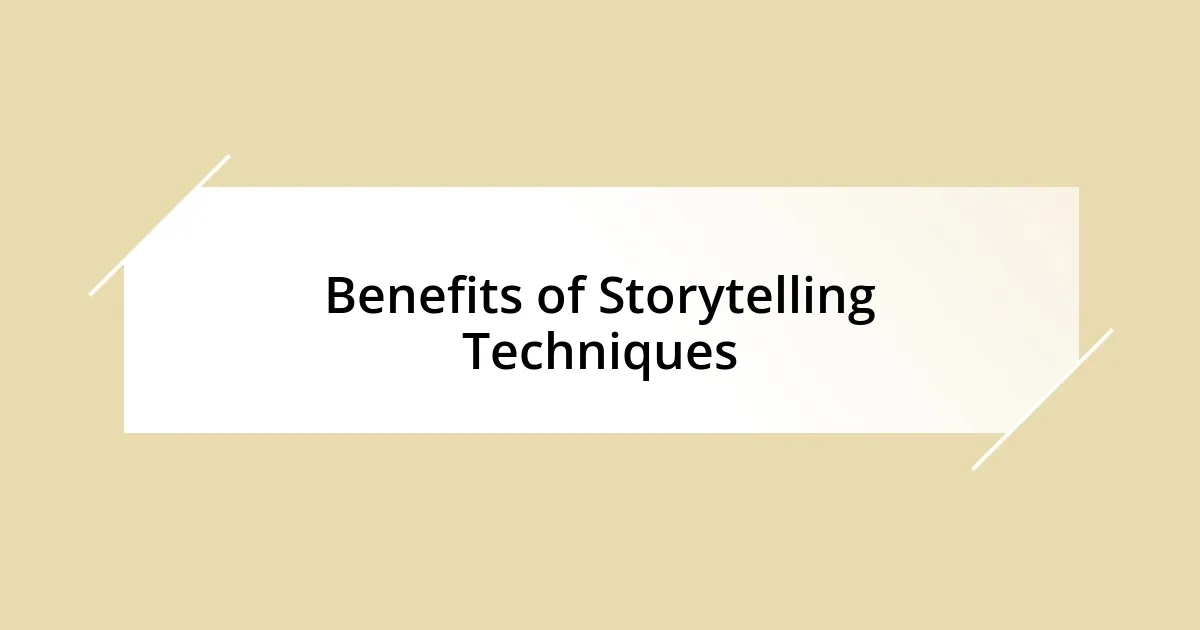
Benefits of Storytelling Techniques
Storytelling techniques offer transformative benefits that can significantly enhance engagement. It’s fascinating how narratives help distill complex ideas into relatable experiences. I once shared a story about my first day in a new job, and the laughter and nods of recognition from colleagues reminded me how shared experiences can break barriers. When people connect with your story, it fosters a sense of trust that is hard to achieve through facts and figures alone.
Some key benefits of using storytelling techniques include:
- Emotional Resonance: Stories can stir emotions, making information memorable.
- Increased Retention: Narratives improve understanding and recall of the material presented.
- Enhanced Connection: Storytelling creates a bond between the storyteller and the audience, promoting empathy and understanding.
- Inspiring Action: A well-crafted story can motivate audience members to take action or change their perspective.
- Simplification of Complex Ideas: Complicated concepts become easier to grasp when wrapped in a narrative.
For me, the real magic lies in watching listeners’ faces lighten as they relate to what I’m saying; that connection is priceless.
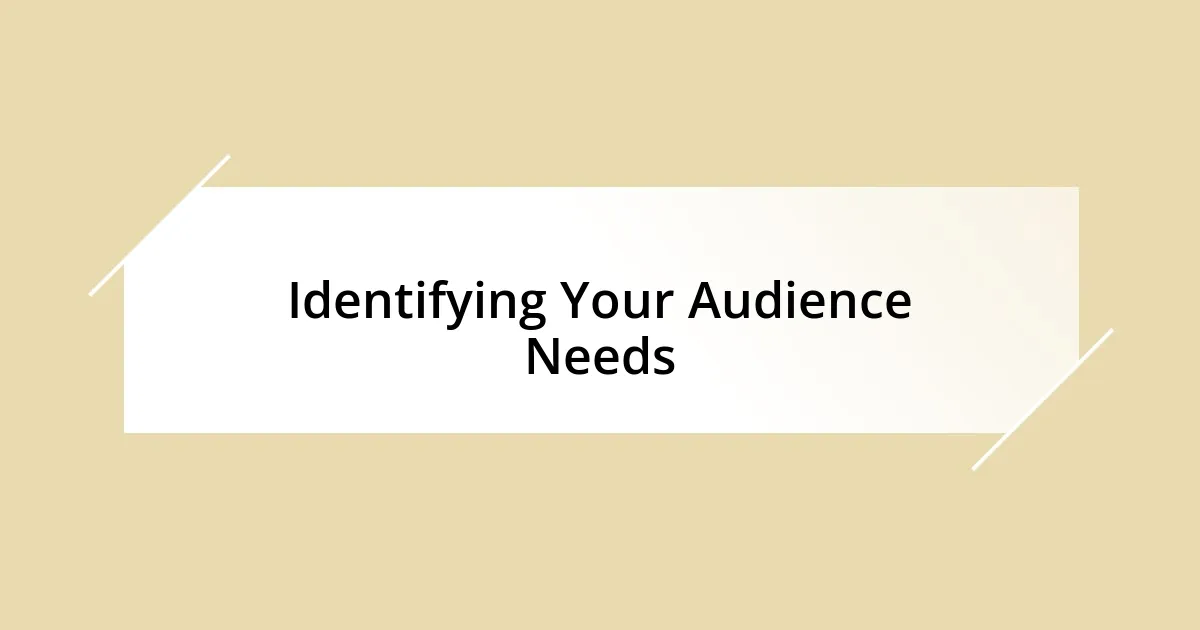
Identifying Your Audience Needs
Understanding your audience’s needs is the cornerstone of effective storytelling. I recall a situation where I tailored a presentation for a diverse group, considering their varying backgrounds and interests. Observing their reactions taught me that by aligning my story to their needs, I could illuminate common experiences, making the message resonate more deeply.
It’s crucial to actively listen to your audience. I remember a feedback session after a storytelling event where attendees voiced their preferences. Their insights shifted my approach and enriched my future narratives. When you genuinely tune in, you not only gauge their interests but also invite them into your storytelling process, which fosters a participatory atmosphere.
Conducting surveys or informal polls can yield valuable insights before crafting your story. Once, I conducted a simple online poll asking my audience what themes resonated with them. The data I gathered enabled me to weave relevant elements into my narratives, significantly enhancing their engagement. Isn’t it fascinating how an understanding of your audience can transform a mundane topic into an engaging experience?
| Method | Benefit |
|---|---|
| Active Listening | Enhances connection and helps tailor stories. |
| Surveys and Polls | Gather specific preferences to guide narrative choices. |
| Feedback Sessions | Provide insights for future storytelling improvements. |
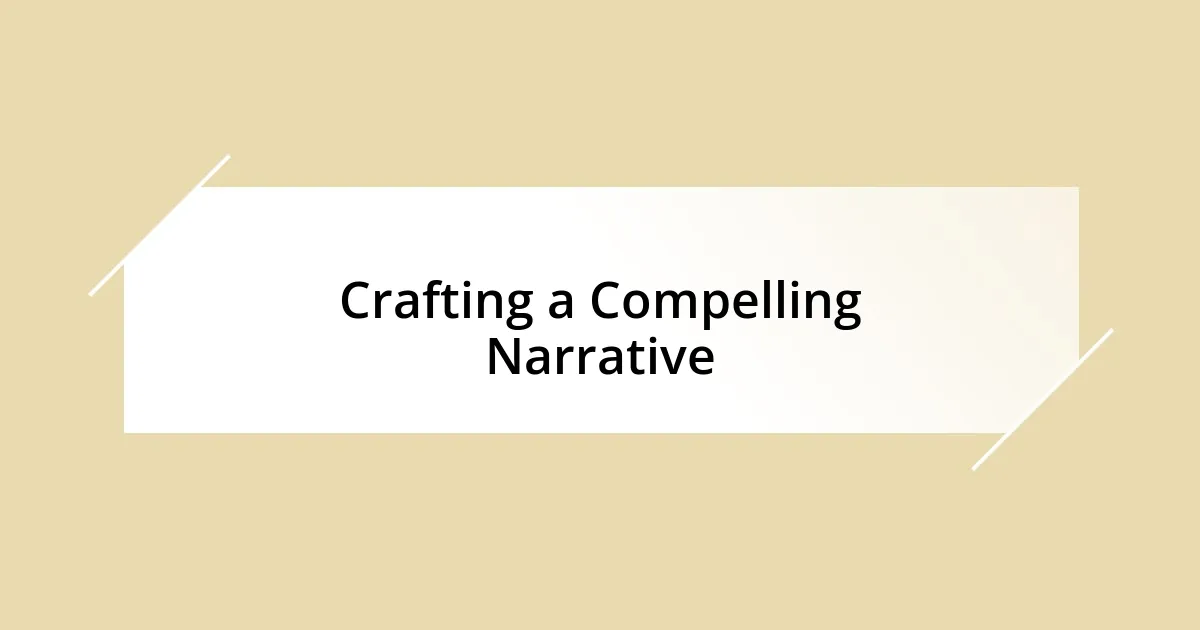
Crafting a Compelling Narrative
Crafting a compelling narrative is all about building a connection. I remember when I was working on a project for a community event. Instead of just presenting the statistics of past successes, I shared a heartfelt story about a family that benefited from our efforts. The audience leaned in, captivated by the human element, which transformed a bland report into a vivid picture. Isn’t it interesting how a personal touch can make data feel alive?
Structure plays a vital role in storytelling. I find that the classic arc—setting the scene, introducing conflict, and culminating with resolution—gives my narratives a captivating flow. For instance, while volunteering at a local shelter, I shared the journey of a young boy who overcame challenges to find stability. The rising tension followed by his inspiring triumph resonated powerfully, prompting gasps and applause. This structure doesn’t just tell a story; it invites the audience to experience a shared journey, fostering engagement at a deeper level.
Finally, embracing vulnerability can elevate your narrative. I often weave in my own struggles and failures, like the time I faced rejection after applying for a job I desperately wanted. By acknowledging my vulnerability, I create a safe space for others to relate and share. It’s an invitation to join me in the narrative—after all, who hasn’t faced hurdles? This authenticity not only captivates but also builds trust, enhancing the overall impact of the story. Wouldn’t you agree that sharing our flaws can sometimes be the most powerful way to connect?
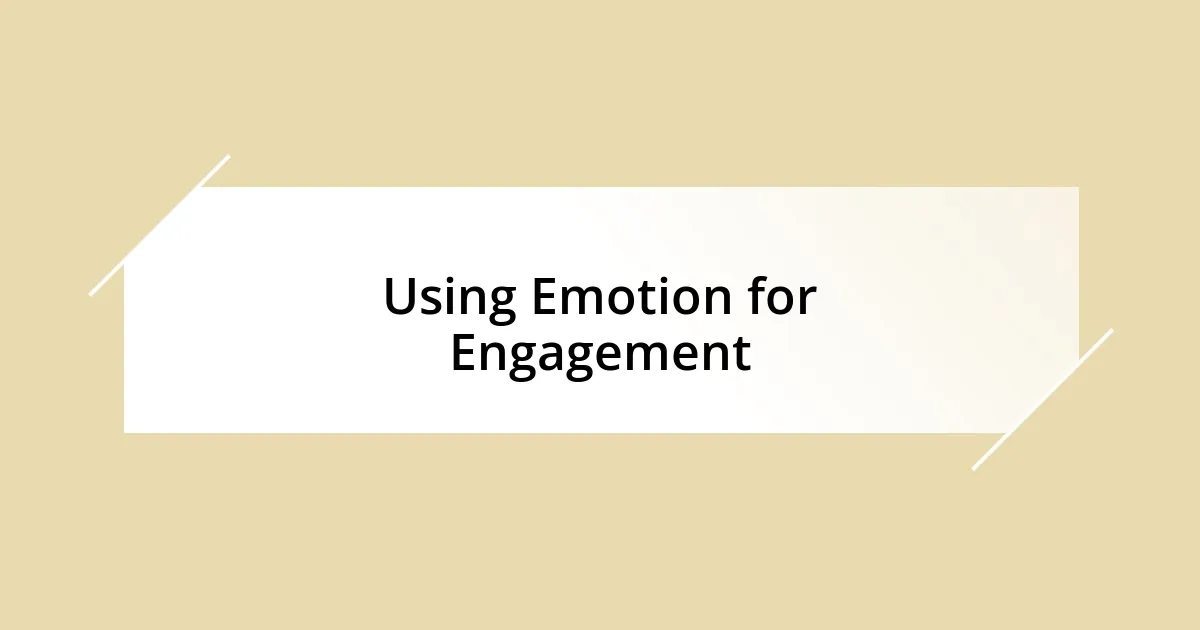
Using Emotion for Engagement
Emotion is the heartbeat of storytelling, and I’ve seen firsthand how it can invigorate engagement. For example, during a presentation on mental health, I shared my emotional struggle with anxiety. The vulnerability in my voice was palpable; I could see heads nodding, eyes glistening. It was like a ripple effect—when I opened up, others felt encouraged to do the same. Isn’t it amazing how shared emotions can unite us?
Tapping into specific feelings, such as hope or joy, can also greatly enhance connection. I vividly recall an event where I recounted a surprising moment of kindness during a long, dreary day. As I described that unexpected act of generosity, laughter and smiles surfaced throughout the room. It’s incredible how a simple story can bring warmth and optimism, making the audience feel lighter and more connected to one another.
Moreover, I often contemplate the power of nostalgia in storytelling. Recalling fond memories evokes such a rich tapestry of emotions. I remember sharing a childhood story about building sandcastles at the beach, and how it transported many in the audience back to their own carefree days. I noticed them visibly relax, a wave of nostalgia washing over them. Isn’t it fascinating how emotions can not only engage but also create a community of shared experience?
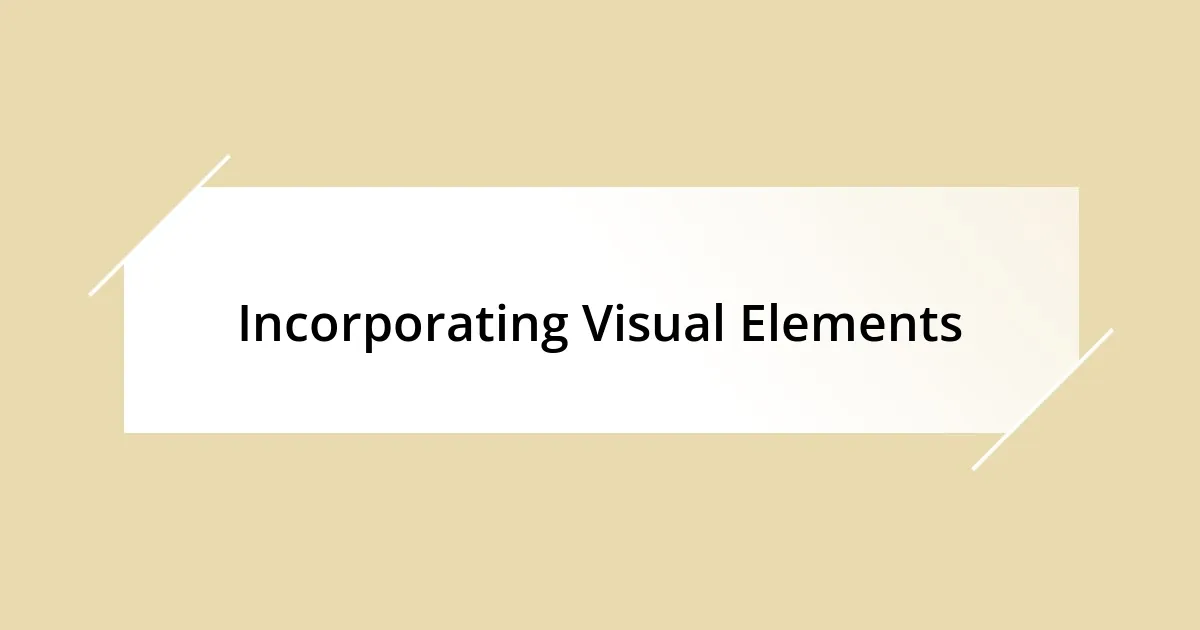
Incorporating Visual Elements
In my experience, visual elements can breathe life into storytelling. I vividly remember integrating photos during a presentation about a wildlife conservation project I was involved in. As I shared images of endangered species and their habitats, the audience’s eyes lit up. It made the narrative feel more tangible; they weren’t just hearing about the issues—they were seeing them.
Infographics also play a significant role in making data digestible. Once, I created a colorful infographic showing statistics on volunteering impacts in our community. The visual breakdown turned complex information into a clear, digestible format. I noticed the shift in the room; people were engaged, leaning in with curiosity instead of squinting at a barrage of numbers. It’s amazing how a well-crafted visual can transform perceptions and invite conversation.
Moreover, I’ve found that relatable illustrations enhance emotional connection. For instance, during a talk on mental health, I used simple drawings to represent different feelings like joy, sadness, and anxiety. As I placed each visual on the screen, I saw nods and smiles of recognition around the room. Doesn’t it feel wonderful when art and storytelling intersect? That blend offers a shared recognition of our diverse experiences—a visual dialogue that resonates deeply with everyone present.
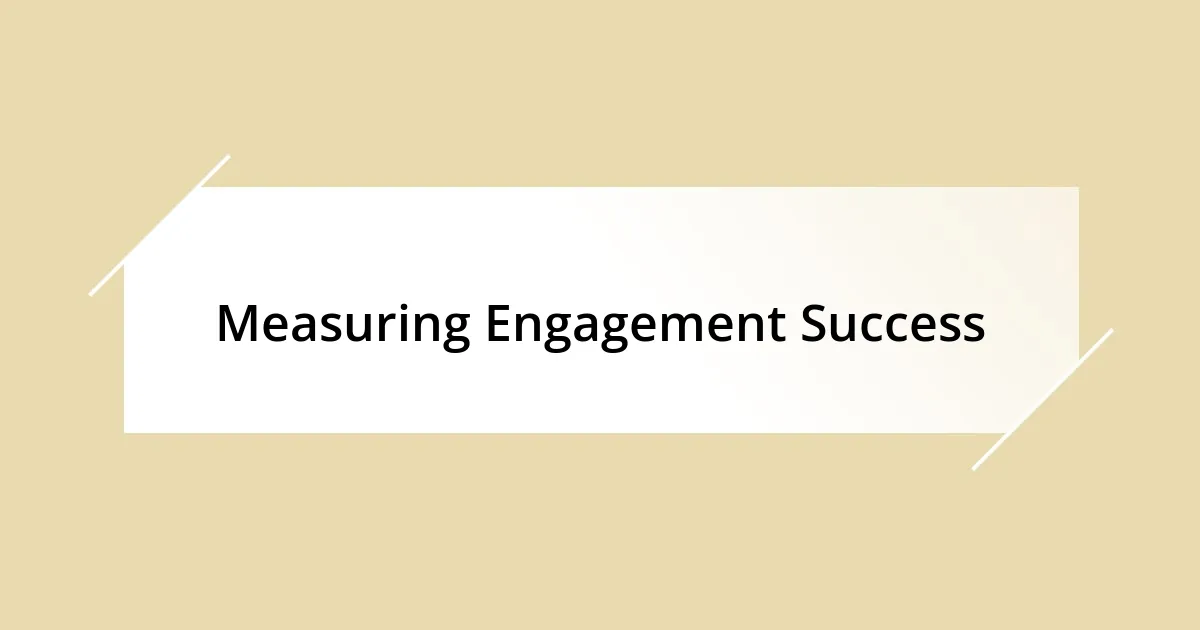
Measuring Engagement Success
To truly understand the success of engagement, I rely heavily on feedback mechanisms. After a storytelling session, I often circulate simple surveys to gather insights from attendees. Their responses reveal what resonated with them, and seeing phrases like “I felt understood” or “that story stayed with me” brings immense satisfaction. It’s like a confirmation that the emotional threads I weaved through my stories are connecting, and those moments of validation keep me motivated.
I also pay attention to audience body language during my presentations. There’s something deeply telling about the way people lean in or nod in agreement. Once, while recounting a profound experience about overcoming adversity, I noticed a few individuals wiping away tears. That non-verbal communication tells me my story has struck a chord, and it’s a powerful motivator. How often do we take the time to notice these cues that reflect our impact?
Finally, I often monitor social media engagement post-event. When participants share quotes or reflections—especially when they tag me in their posts—it shows the story lives on beyond the moment. Recently, I saw a tweet from an attendee who mentioned how my tale of resilience inspired them to share their own story. It tickles me to think that one narrative can ripple outward, igniting new conversations and connections. Isn’t it remarkable how measuring engagement isn’t just about numbers, but the meaningful moments we create together?
